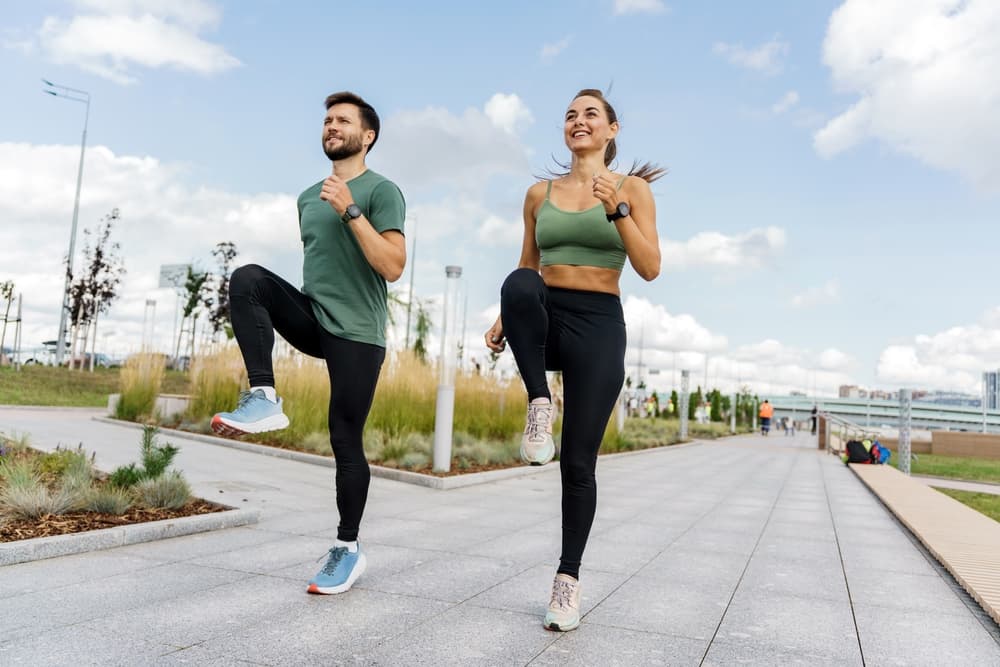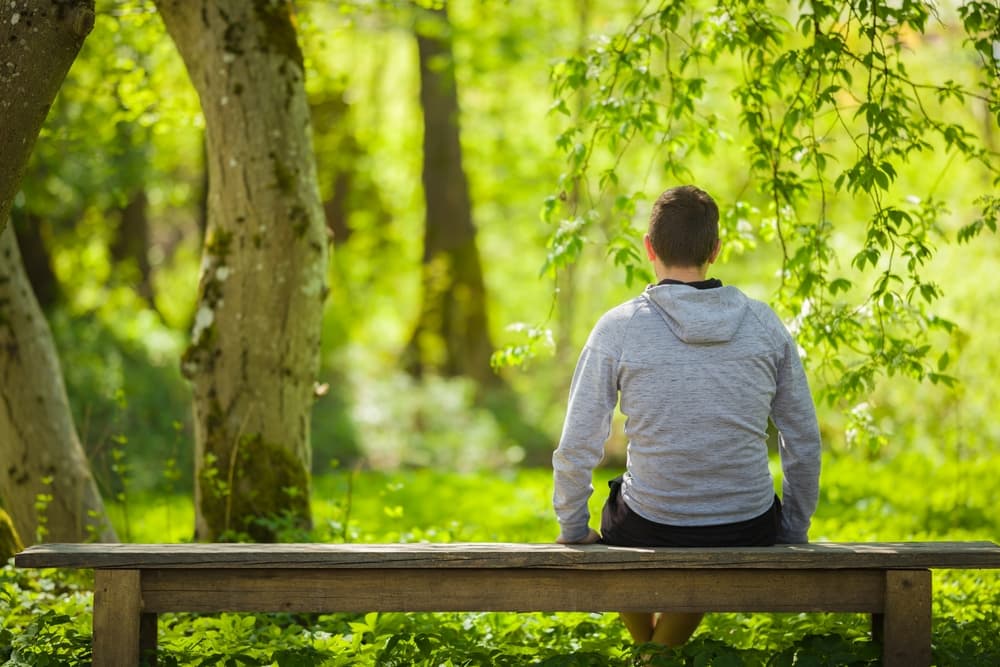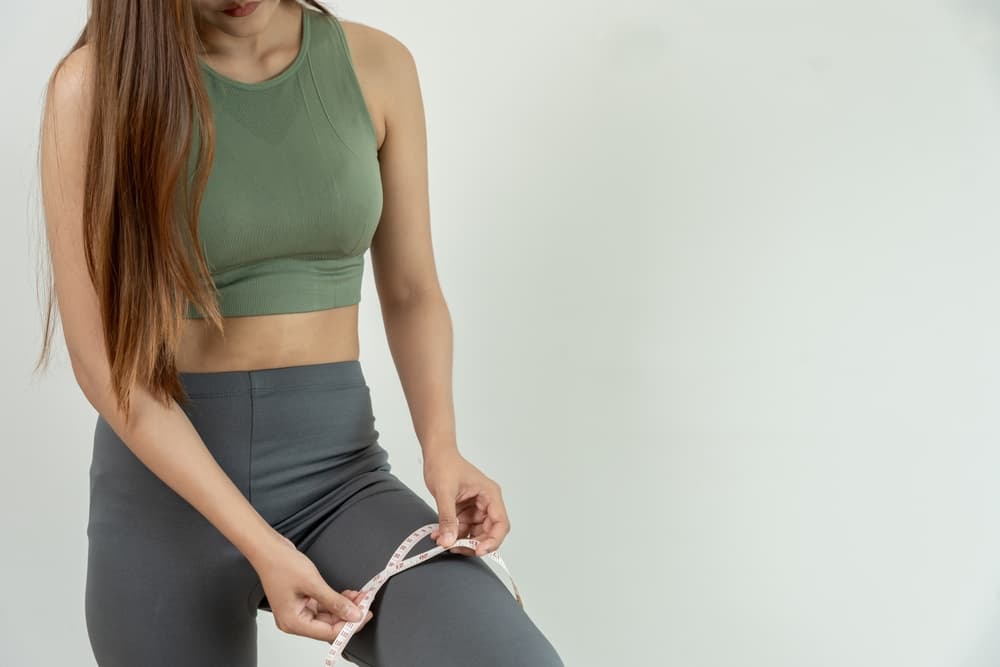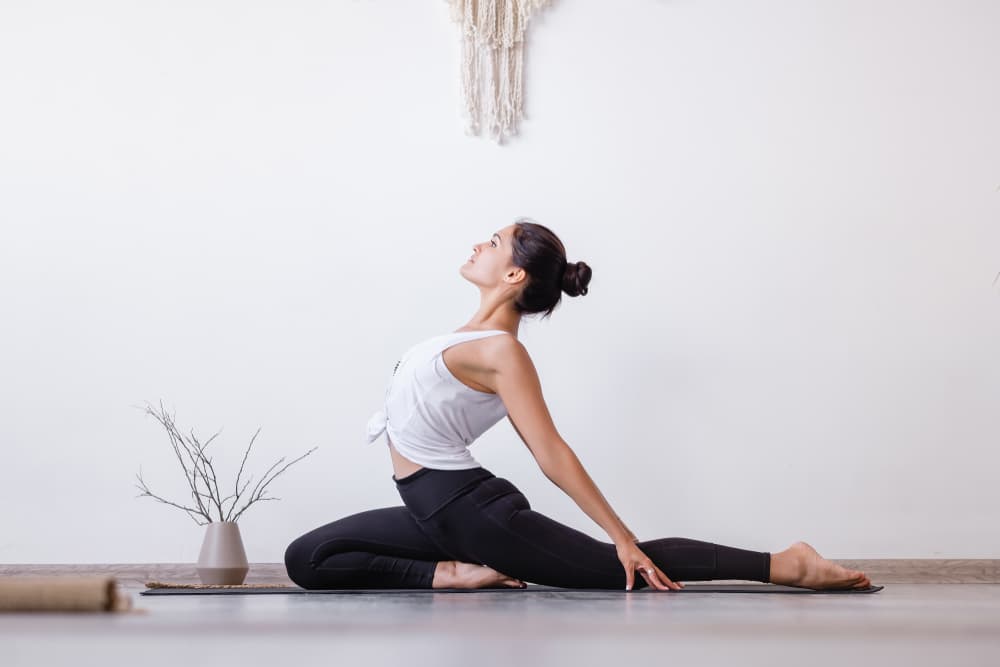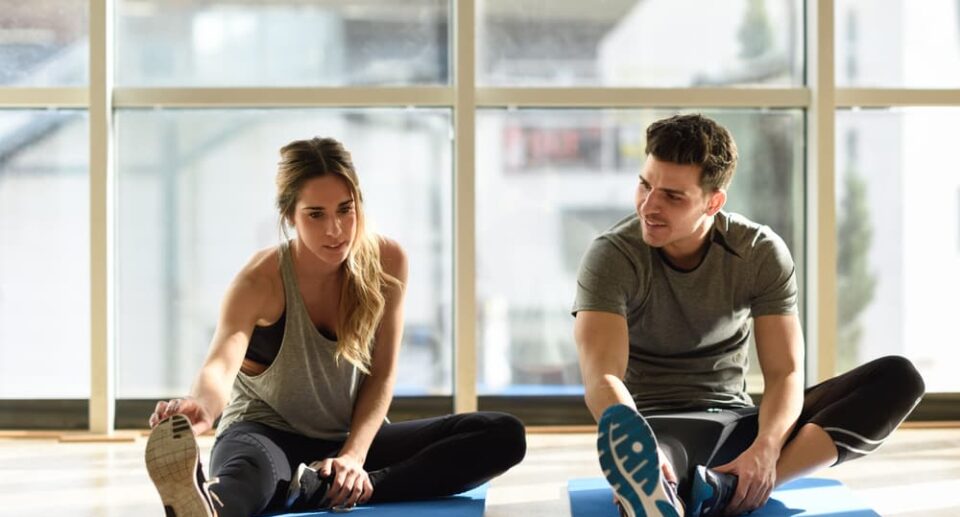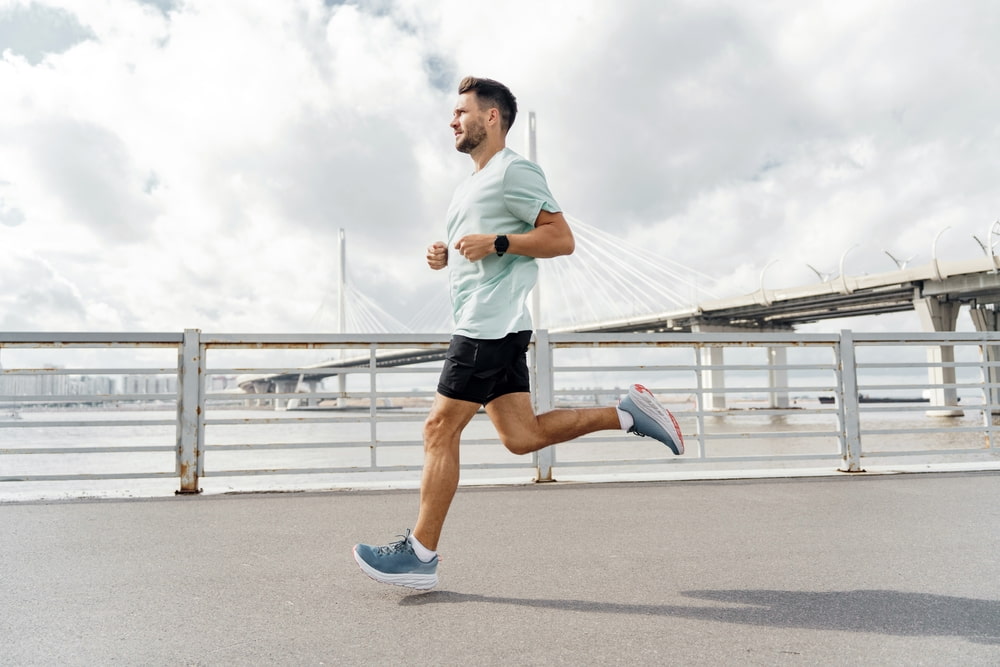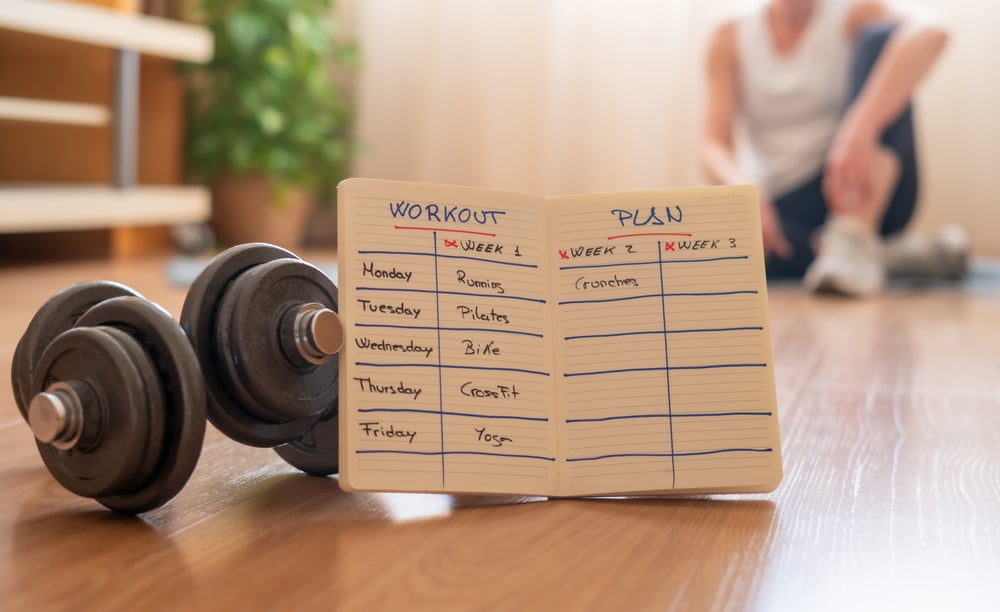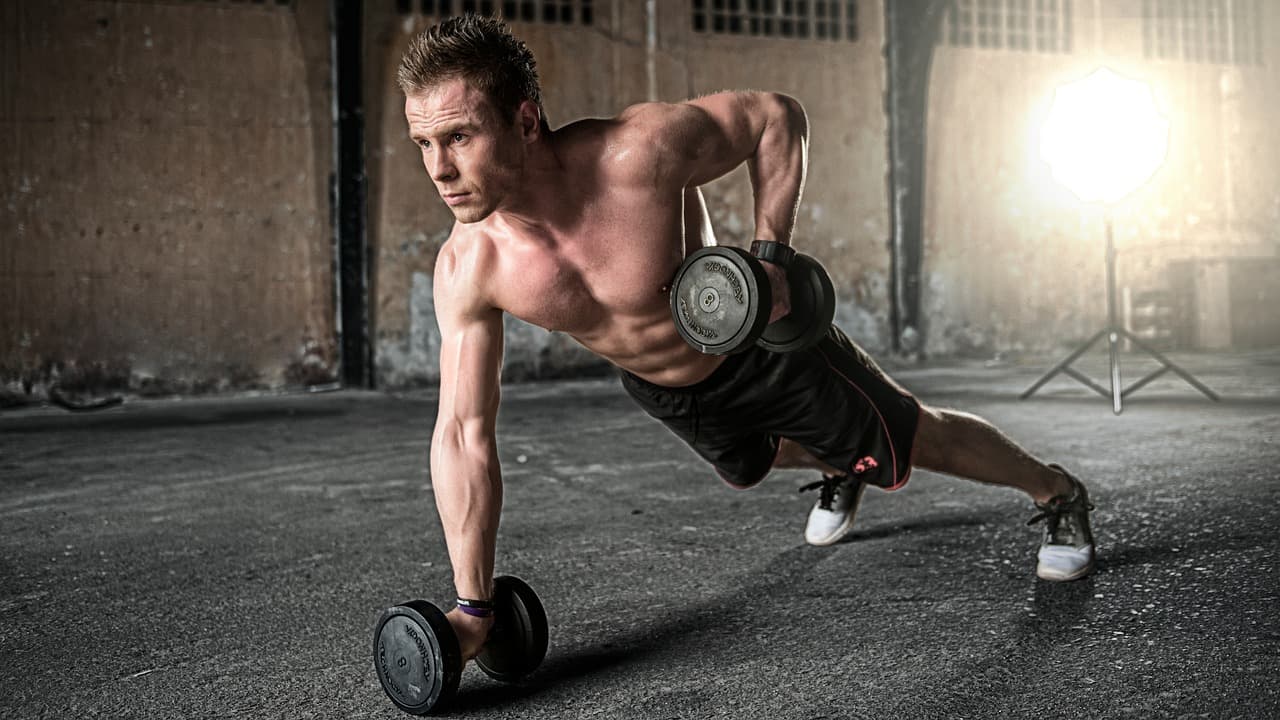Best Leg Exercises to Build Lower Body Strength
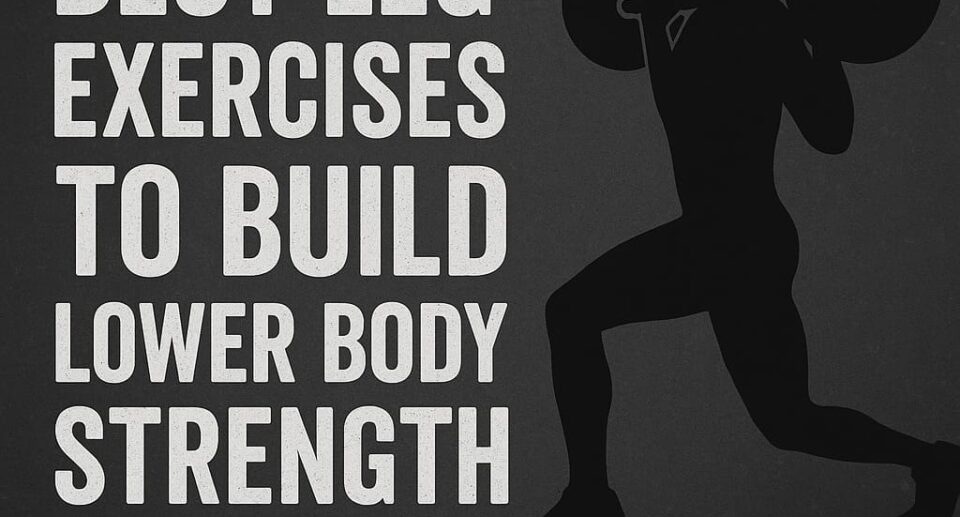

The Foundation of Strength
When it comes to fitness, many people focus on building a strong upper body, but true strength and balance start from the ground up. Your legs are home to some of the largest and most powerful muscles in the body including the quadriceps, hamstrings, glutes, and calves. Strengthening these muscles is not only essential for athletic performance but also for everyday activities like walking, climbing stairs, and maintaining proper posture.
Building lower body strength through targeted leg exercises offers numerous benefits:
- Improved functional strength for daily movements
- Enhanced athletic performance in sports and training
- Better balance and stability to prevent falls or injuries
- Boosted metabolism since leg workouts engage large muscle groups
- Aesthetic benefits like toned thighs, stronger calves, and sculpted glutes
Whether you’re a beginner starting your fitness journey or an advanced lifter aiming to build explosive power, incorporating the best leg exercises into your routine is a game-changer.
In this article, we’ll explore:
- The most effective compound and isolation exercises for the lower body
- Correct form and variations to suit all fitness levels
- A complete fitness routine for building stronger legs
- Science-backed health benefits of leg training
- Pro tips on nutrition and recovery for maximum gains
Fitness Note: Always warm up before starting, maintain proper form, and consult a trainer or healthcare provider if you have injuries.
For a holistic training guide that pairs lower body exercises with upper body routines, you can also explore:
👉 CoreWellFit – Best Home Workouts for Arm Toning Without Equipment
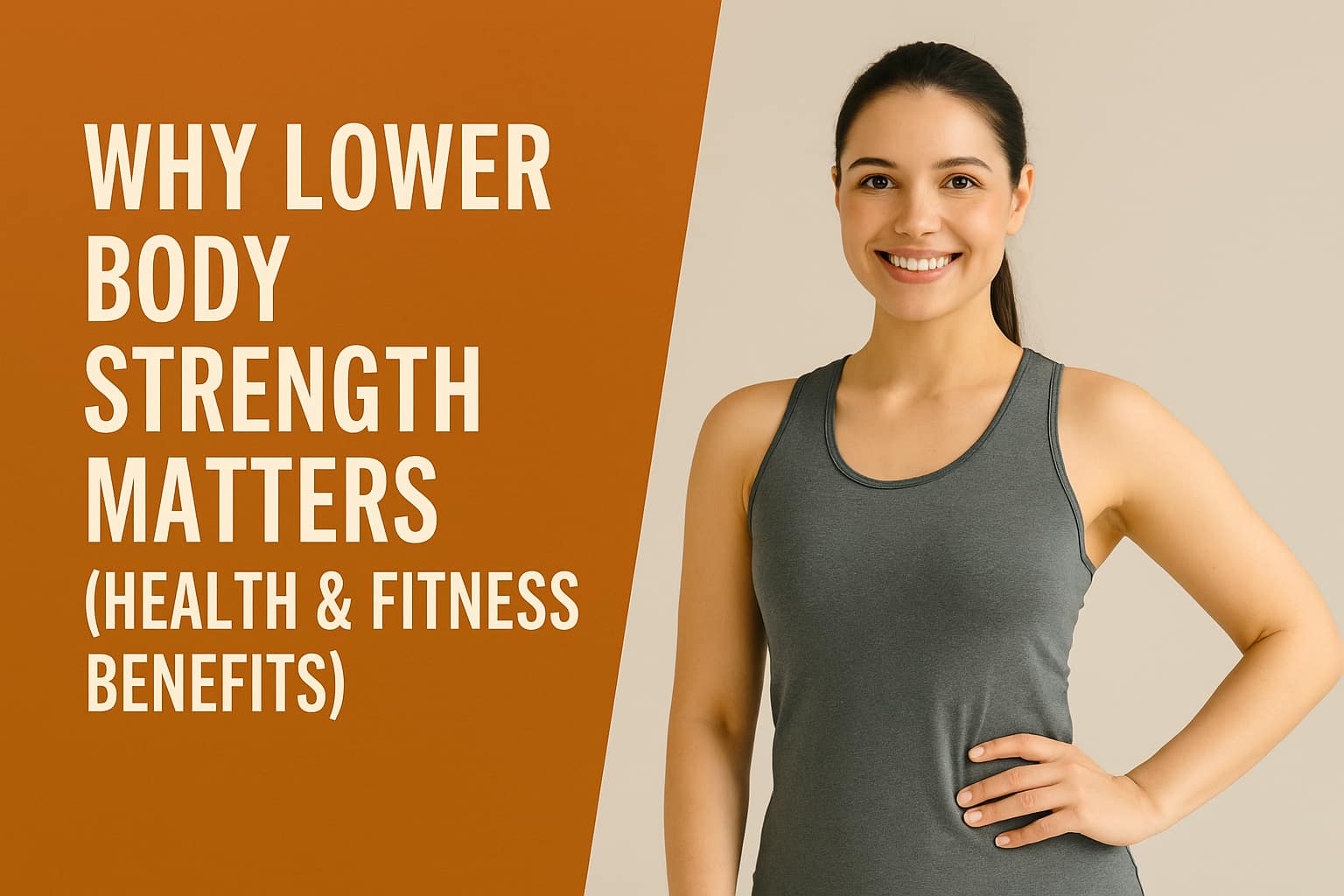
1. Why Lower Body Strength Matters (Health & Fitness Benefits)
Most people think of leg workouts as simply a way to get toned thighs or bigger calves. But in reality, lower body strength is the foundation of total-body fitness. Your legs support your body weight, help you move efficiently, and protect you from injuries. Here’s why building leg strength should be a top priority:
1.1 Functional Strength for Everyday Life
Every step you take, every time you sit down or stand up, and even when you lift something heavy your legs are doing the work. Strong quadriceps, hamstrings, and glutes make daily activities easier and reduce the risk of strains or fatigue.
1.2 Athletic Performance Boost
For athletes or fitness enthusiasts, leg power is critical. Whether it’s sprinting, jumping, cycling, or weightlifting, strong legs increase performance by generating more speed, force, and endurance.
1.3 Injury Prevention and Stability
Weak leg muscles can lead to knee pain, back strain, and ankle injuries. By strengthening your legs, you also build up the smaller stabilizing muscles that protect joints and improve balance. This is especially important for older adults.
1.4 Metabolic Benefits
Leg exercises like squats, lunges, and deadlifts engage multiple large muscle groups at once. This burns more calories, improves metabolism, and helps with fat loss. It’s one of the reasons why leg day is often the most challenging yet rewarding workout.
1.5 Posture and Core Connection
Surprisingly, strong legs also improve your core strength and posture. Movements like squats and deadlifts engage your abs and lower back, keeping your spine aligned and reducing slouching.
1.6 Mental and Aesthetic Benefits
- Psychologically, pushing through tough leg workouts builds mental resilience.
- Aesthetically, well-trained legs give your body a balanced and athletic look, preventing the “skipped leg day” stereotype.
✅ Quick Fitness Insight
Think of your legs as the foundation of your body—just like a house needs a strong base, your body needs strong legs for overall stability, strength, and growth.
Outbound Resource: According to the American Council on Exercise (ACE), lower-body training is vital not only for athletes but also for maintaining long-term mobility and independence.
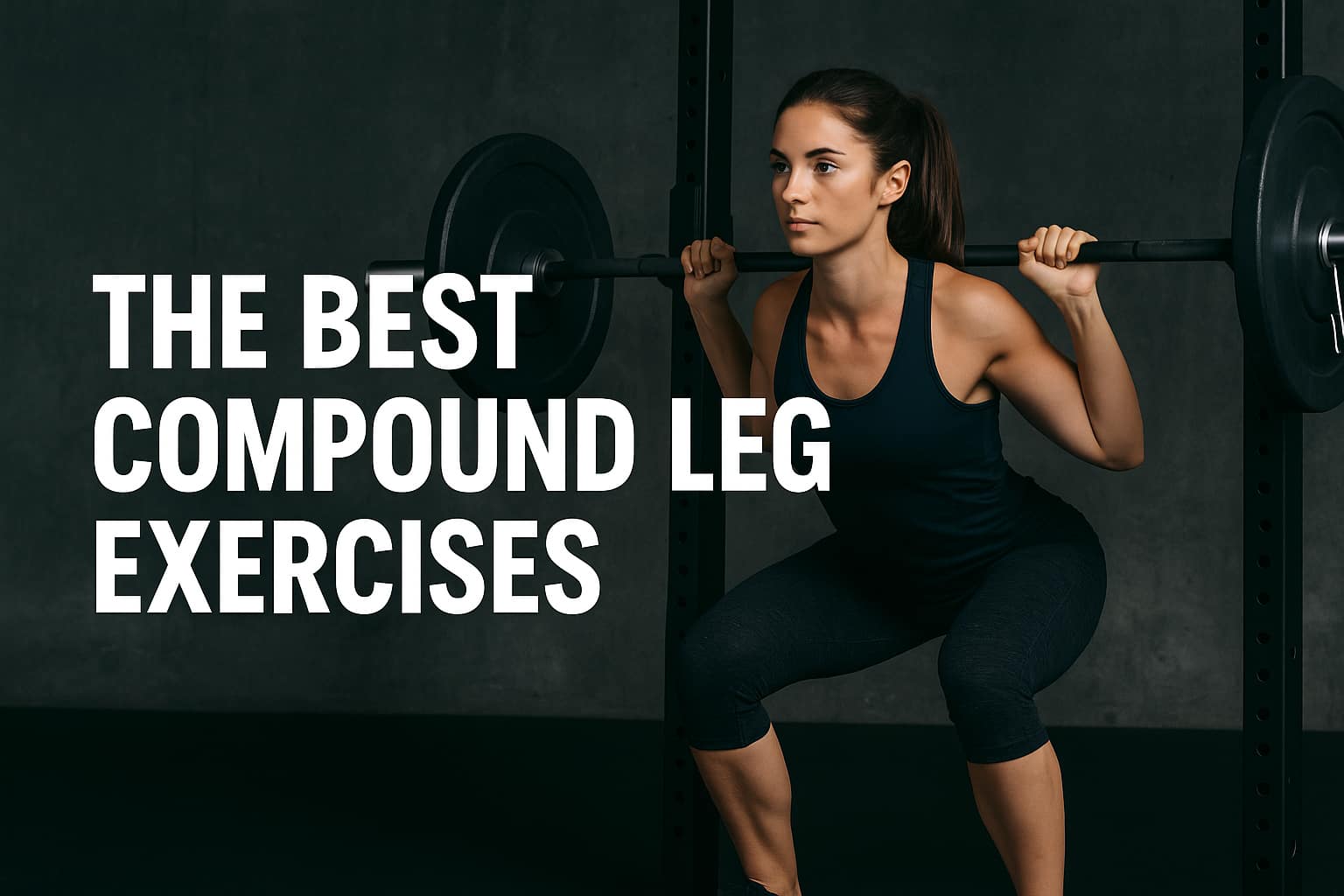
2. The Best Compound Leg Exercises (Multi-Joint Movements for Maximum Strength)
Compound leg exercises are often called the “big lifts” because they target multiple muscle groups at once. These movements don’t just build leg size they enhance overall strength, balance, and coordination. If you want maximum results, these should form the foundation of your leg workouts.
2.1 Squats – The King of Leg Exercises
- Muscles Worked: Quadriceps, glutes, hamstrings, calves, core.
- How to Do It:
- Stand with feet shoulder-width apart.
- Keep your chest up, back straight, and slowly bend your knees to lower into a sitting position.
- Lower until thighs are parallel to the floor, then push back up through your heels.
- Variations: Bodyweight squat, goblet squat, barbell back squat, front squat.
- Why It Works: Squats build explosive strength, improve hip mobility, and torch calories.
2.2 Deadlifts – Total Lower Body & Core Builder
- Muscles Worked: Hamstrings, glutes, lower back, calves, traps.
- How to Do It:
- Stand with feet hip-width apart, barbell in front.
- Bend at hips and knees, grip the barbell with both hands.
- Keeping your back flat, push through heels and lift until standing tall.
- Variations: Conventional deadlift, Romanian deadlift, sumo deadlift.
- Why It Works: Builds raw power, strengthens posterior chain (backside muscles), and improves posture.
2.3 Lunges – Strength + Balance Combo
- Muscles Worked: Quadriceps, glutes, hamstrings, calves.
- How to Do It:
- Stand tall with feet together.
- Step forward with one leg and lower your hips until both knees are bent at 90°.
- Push through your front heel to return to standing.
- Variations: Walking lunges, reverse lunges, lateral lunges, Bulgarian split squats.
- Why It Works: Lunges build unilateral strength (one leg at a time), correct muscle imbalances, and improve coordination.
2.4 Step-Ups – Functional Power Move
- Muscles Worked: Quadriceps, glutes, calves.
- How to Do It:
- Stand facing a bench or box.
- Step onto the box with one leg, pressing through the heel.
- Bring the other leg up, then step back down.
- Variations: Weighted step-ups (holding dumbbells).
- Why It Works: Mimics real-life movements like climbing stairs and builds functional lower body power.
2.5 Hip Thrusts – Glute Strength Essential
- Muscles Worked: Glutes, hamstrings, lower back.
- How to Do It:
- Sit with upper back against a bench, feet flat on the floor.
- Place a barbell or weight across your hips.
- Drive through your heels and lift your hips upward until your torso is parallel to the floor.
- Why It Works: One of the most effective exercises for glute activation and hip power, useful for athletes and aesthetics alike.
✅ Pro Fitness Insight
Compound exercises maximize calorie burn, build functional strength, and stimulate hormonal responses like testosterone and growth hormone release crucial for muscle growth.
Inbound Resource: You can pair these with CoreWellFit’s at-home training guides like Best Home Workouts for Arm Toning Without Equipment to create a full-body fitness routine.
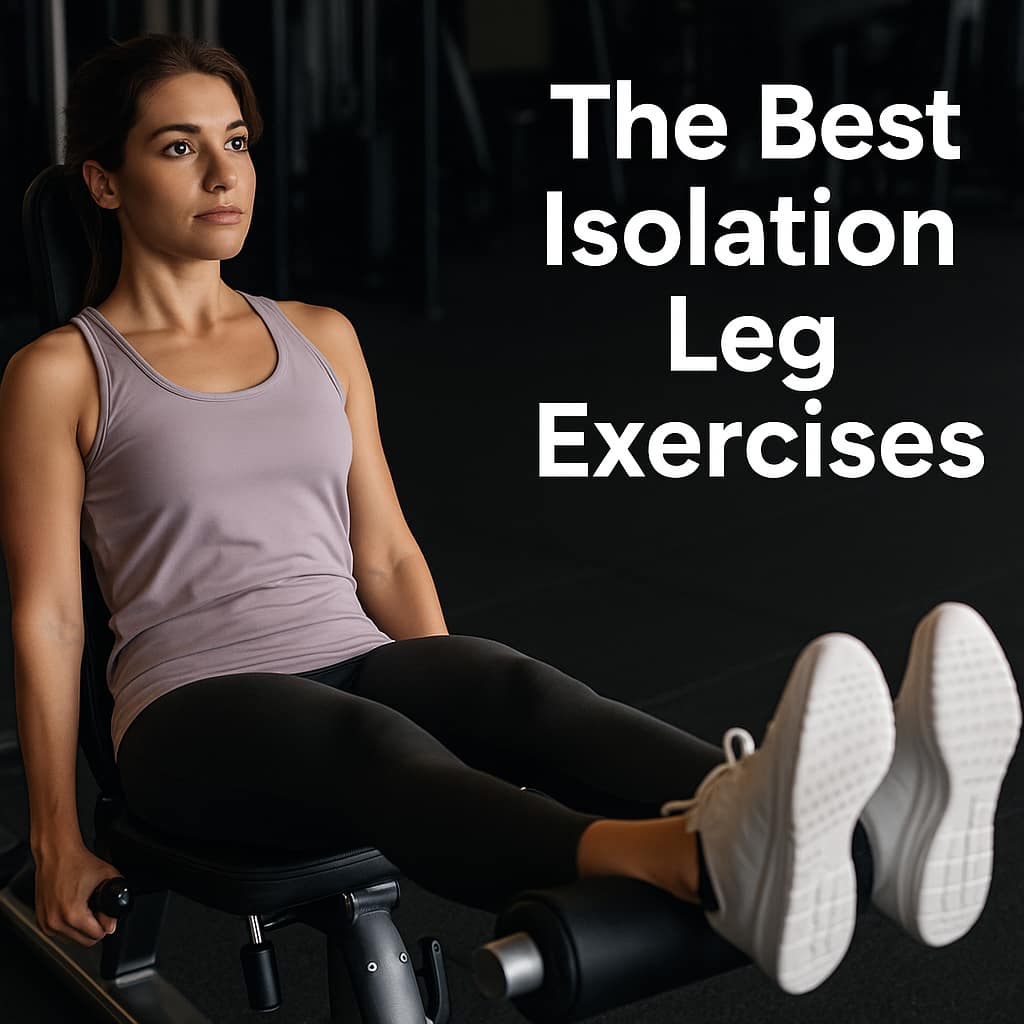
3. The Best Isolation Leg Exercises (Targeted Muscle Training for Shape & Definition)
While compound exercises build overall strength and mass, isolation exercises are crucial for targeting specific muscles, improving muscle definition, and correcting imbalances. These exercises focus on one muscle group at a time, helping you sculpt your legs and create balanced development.
3.1 Leg Extensions – Quad Focus
- Muscles Worked: Quadriceps
- How to Do It:
- Sit on a leg extension machine with knees bent at 90°.
- Place your shins behind the padded bar.
- Extend your legs until fully straight, then slowly lower back down.
- Why It Works: Great for isolating quads and adding definition to the front of the thighs.
3.2 Hamstring Curls – Back of the Thighs
- Muscles Worked: Hamstrings
- How to Do It:
- Lie face down on a leg curl machine with ankles under the padded lever.
- Curl your heels toward your glutes.
- Lower slowly to starting position.
- Variations: Seated leg curl, stability ball hamstring curls.
- Why It Works: Specifically strengthens hamstrings, helping balance quad dominance and prevent knee injuries.
3.3 Calf Raises – Building Lower Leg Strength
- Muscles Worked: Calves (gastrocnemius & soleus)
- How to Do It:
- Stand with feet shoulder-width apart, holding weights if desired.
- Rise up on the balls of your feet, hold for 1–2 seconds.
- Slowly lower down until heels almost touch the floor.
- Variations: Standing calf raise, seated calf raise, single-leg calf raise.
- Why It Works: Improves ankle strength, explosiveness, and adds definition to lower legs.
3.4 Glute Kickbacks – Shaping the Glutes
- Muscles Worked: Glutes
- How to Do It:
- On all fours, keep your back flat.
- Extend one leg straight back and upward while squeezing the glute.
- Lower slowly without touching the floor.
- Variations: Cable kickbacks, resistance band kickbacks.
- Why It Works: Perfect for targeting and shaping the glutes, especially for people who sit for long hours.
3.5 Inner & Outer Thigh Workouts – Adductors and Abductors
- Muscles Worked: Inner thighs (adductors), outer thighs/hips (abductors).
- How to Do It:
- Machines like hip adduction and hip abduction allow you to push your legs inward or outward against resistance.
- Resistance bands can also replicate this movement at home.
- Why It Works: Strengthens stabilizing muscles in hips and thighs, improving balance and leg symmetry.
✅ Pro Fitness Insight
Isolation exercises should be used to supplement, not replace, compound lifts. They add finishing touches, correct weaknesses, and create balanced, aesthetic legs.
Outbound Resource: According to Healthline, combining compound and isolation moves ensures both strength and definition, reducing the risk of muscular imbalance.
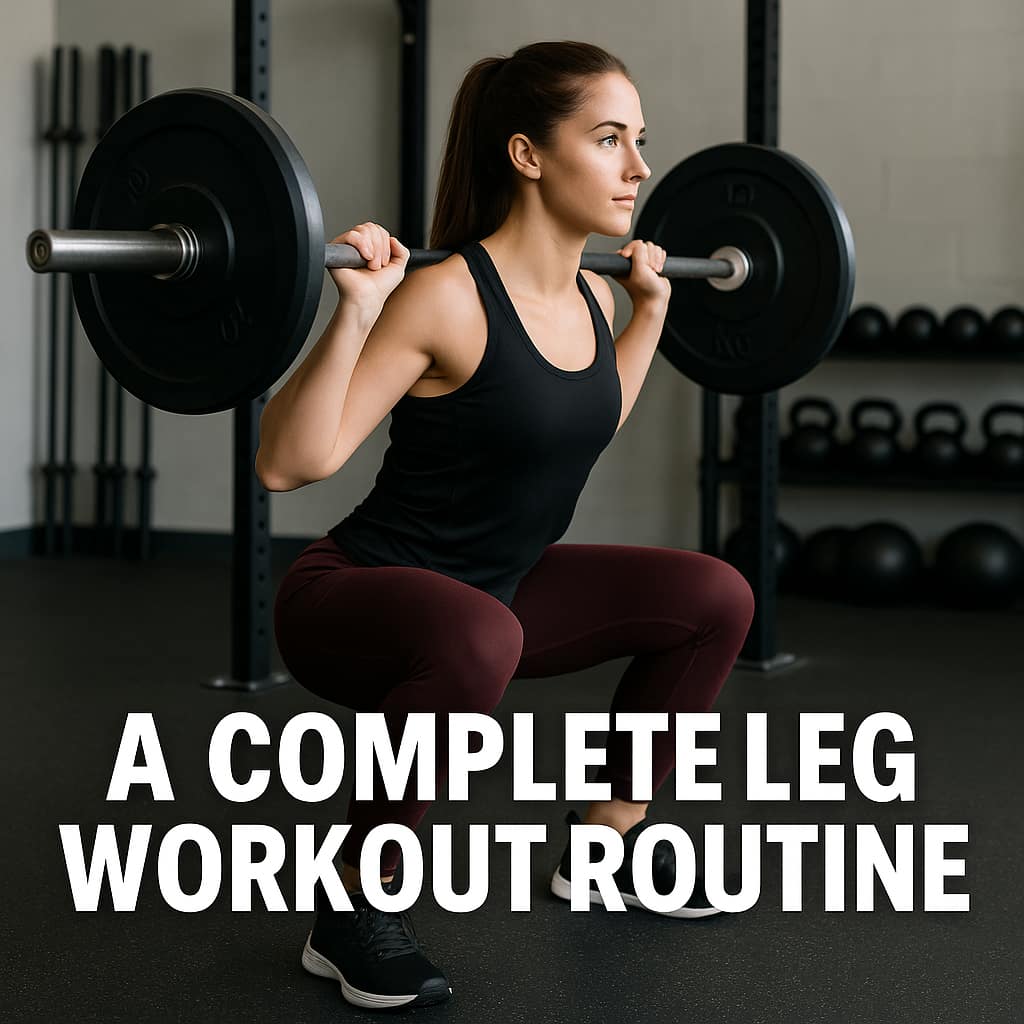
4. A Complete Leg Workout Routine (Beginner, Intermediate & Advanced Plans)
Knowing the best leg exercises is only half the journey what truly matters is how you organize them into a structured routine. Below are workout plans designed for different fitness levels so that anyone from beginners to advanced lifters can build lower body strength effectively.
4.1 Beginner Leg Workout (2–3 days per week)
Focus: Learning form, building endurance, preventing injury
- Bodyweight Squats – 3 sets × 12 reps
- Stationary Lunges – 3 sets × 10 reps per leg
- Glute Bridges – 3 sets × 15 reps
- Calf Raises – 3 sets × 15 reps
- Step-Ups (using a bench or chair) – 2 sets × 12 reps per leg
👉 Tip: Beginners should master bodyweight versions before adding weights.
4.2 Intermediate Leg Workout (2–3 days per week)
Focus: Strength building, adding resistance
- Barbell Back Squats – 4 sets × 8–10 reps
- Romanian Deadlifts – 4 sets × 8–10 reps
- Bulgarian Split Squats – 3 sets × 10 reps per leg
- Hamstring Curls – 3 sets × 12 reps
- Standing Calf Raises – 4 sets × 15 reps
👉 Tip: Increase weights progressively to avoid plateaus.
4.3 Advanced Leg Workout (2–3 days per week)
Focus: Power, hypertrophy (muscle growth), and athletic performance
- Barbell Front Squats – 5 sets × 6–8 reps
- Conventional Deadlifts – 5 sets × 5 reps
- Walking Lunges with Dumbbells – 4 sets × 12 steps each leg
- Hip Thrusts (with barbell) – 4 sets × 8–10 reps
- Leg Extensions – 3 sets × 12–15 reps
- Seated Calf Raises (weighted) – 4 sets × 15–20 reps
👉 Tip: Advanced lifters should track progress, rotate variations, and consider periodization training to keep improving.
4.4 Quick At-Home Leg Routine (No Equipment)
For days when you can’t hit the gym:
- Jump Squats – 3 sets × 15 reps
- Reverse Lunges – 3 sets × 12 reps per leg
- Glute Kickbacks (with resistance band) – 3 sets × 15 reps
- Calf Raises on stairs – 3 sets × 20 reps
- Wall Sit – 3 rounds × 30–60 seconds hold
✅ Pro Fitness Insight
- Beginners should focus on form first.
- Intermediates should add progressive overload (weights/resistance).
- Advanced athletes should aim for strength + power + endurance integration.
Inbound Resource: To complement your leg routine, check out CoreWellFit – Best Home Workouts for Arm Toning Without Equipment for upper body balance.
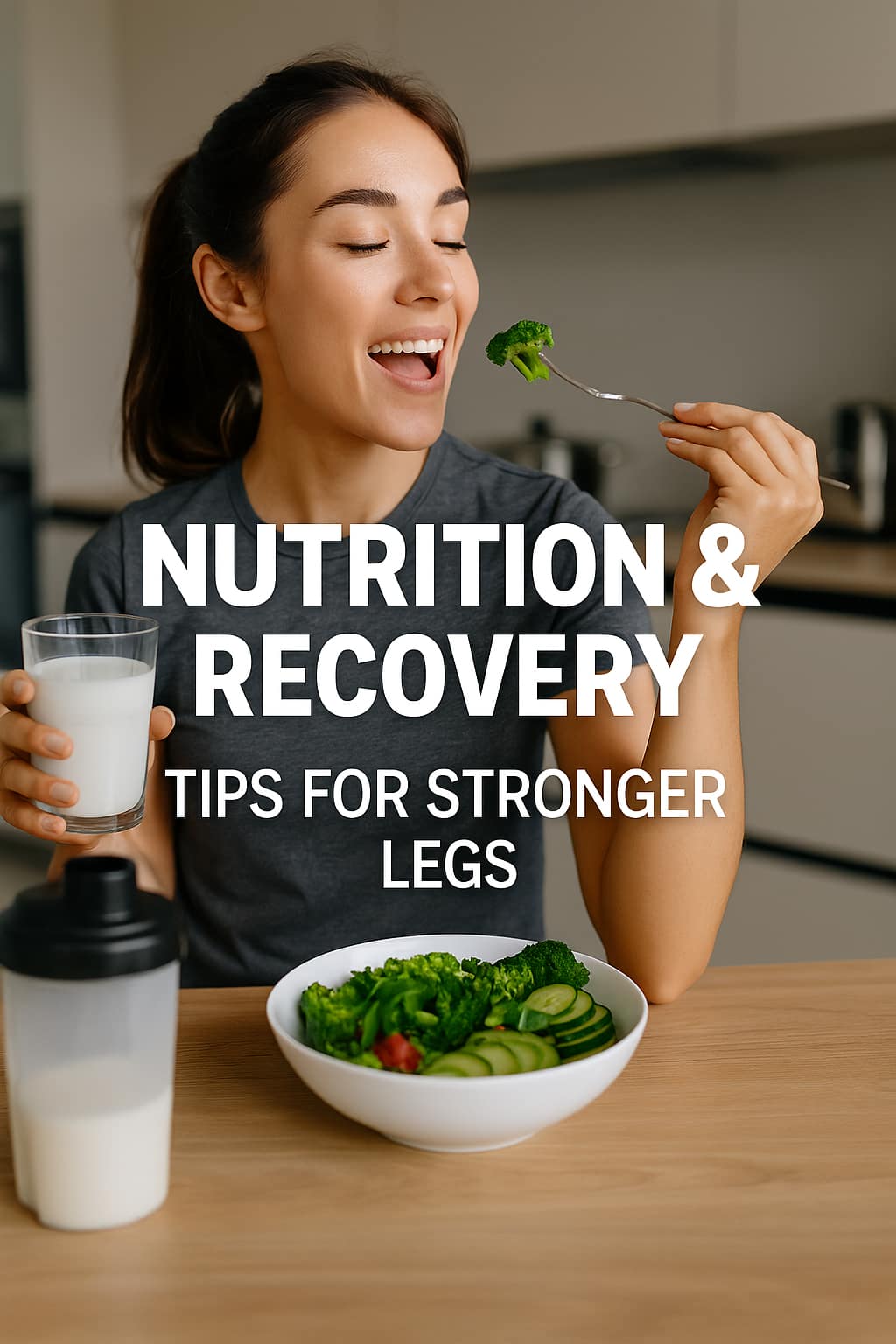
5. Nutrition & Recovery Tips for Stronger Legs
No matter how perfectly you train, your results will be limited without the right nutrition and recovery strategy. Muscles grow and strengthen outside the gym—when you rest and refuel. If you want powerful, well-defined legs, pay equal attention to what goes into your body and how you recover.
5.1 Nutrition Tips for Lower Body Strength
1. Prioritize Protein
- Protein is the building block of muscle.
- Aim for 1.6–2.2 grams of protein per kilogram of body weight daily.
- Best sources: lean meats, fish, eggs, Greek yogurt, tofu, lentils, beans.
2. Balanced Carbohydrates
- Carbs fuel your workouts and replenish glycogen in your muscles.
- Include complex carbs like oats, quinoa, brown rice, and sweet potatoes.
3. Healthy Fats Matter
- Don’t neglect fats—they support hormone production (like testosterone) which aids in muscle growth.
- Sources: avocados, nuts, seeds, olive oil, fatty fish.
4. Hydration is Key
- Dehydration reduces strength and performance.
- Drink at least 2–3 liters of water per day, more if you’re sweating heavily.
5. Pre- & Post-Workout Meals
- Pre-workout: carbs + protein (banana + peanut butter, oats + protein shake).
- Post-workout: protein + fast-digesting carbs (chicken + rice, whey protein + fruit).
5.2 Recovery Strategies
1. Rest & Sleep
- Sleep is when your muscles repair and grow.
- Target 7–9 hours of quality sleep per night.
2. Active Recovery
- Light activities like walking, yoga, or stretching on rest days improve blood flow and speed up recovery.
3. Stretching & Mobility Work
- Incorporate dynamic stretches before workouts and static stretches after.
- Foam rolling or massage can help reduce muscle soreness (DOMS).
4. Training Frequency
- Don’t train legs every day.
- Ideal: 2–3 leg sessions per week with at least 48 hours of rest between heavy leg workouts.
5. Supplements (Optional)
- Creatine: improves strength and power.
- Whey Protein: convenient for meeting protein needs.
- BCAAs: may reduce muscle soreness in high-intensity training.
✅ Pro Fitness Insight
Muscle growth = Training + Nutrition + Recovery. Skipping any one of these three slows down results. Think of it as a tripod—each leg is essential for stability.
Outbound Resource: According to the National Strength and Conditioning Association (NSCA), proper recovery—including nutrition, hydration, and rest—is just as critical as the workout itself for long-term strength and performance.
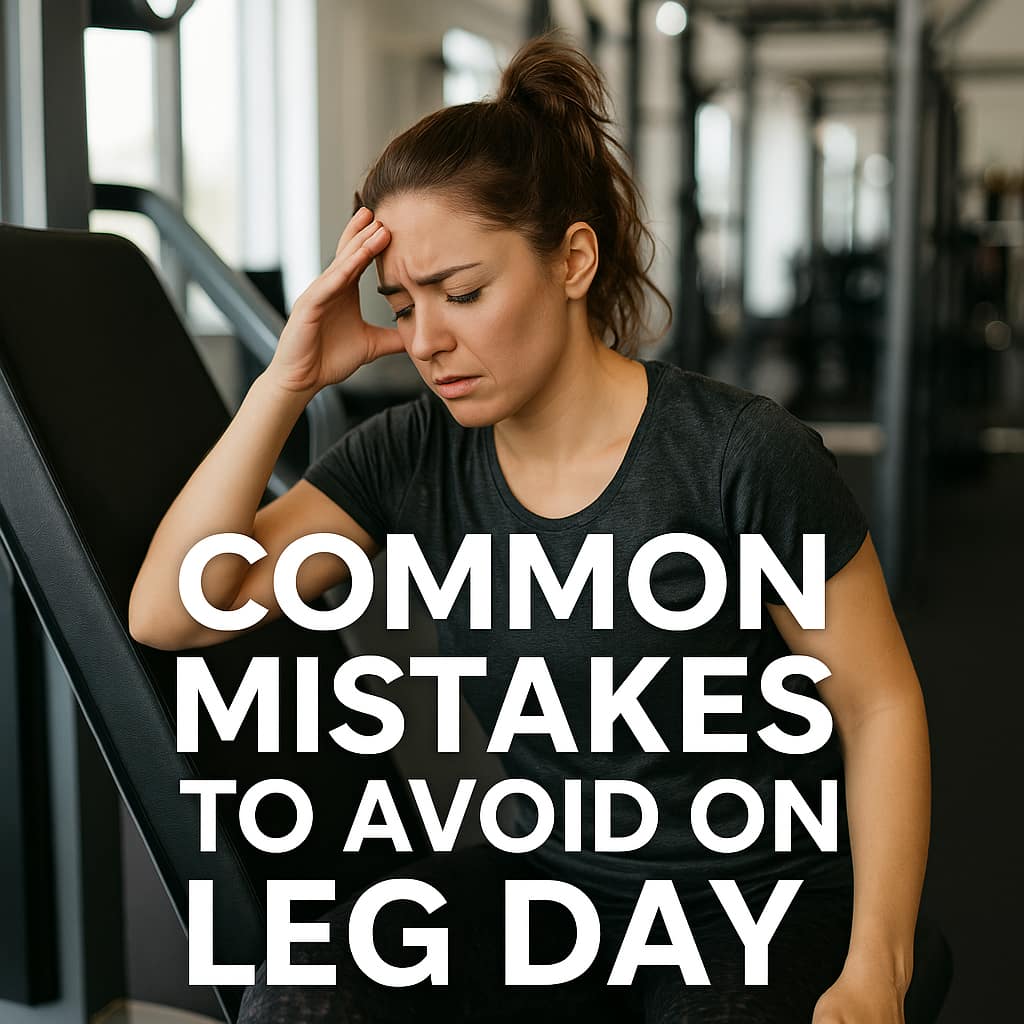
6. Common Mistakes to Avoid on Leg Day
Training legs is tough—and that’s why many people either skip leg day or do it incorrectly. But mistakes during lower body training can reduce progress, cause imbalances, and even lead to injuries. Here are the most common errors and how to avoid them:
6.1 Skipping Leg Day Altogether
- The Mistake: Focusing only on chest, arms, or abs while neglecting legs.
- The Problem: This creates a weak foundation, poor balance, and the classic “skipped leg day” look.
- The Fix: Schedule at least 2 dedicated leg sessions per week.
6.2 Using Too Much Weight Too Soon
- The Mistake: Ego-lifting heavy weights without proper form.
- The Problem: Increases risk of knee, back, and ankle injuries.
- The Fix: Master bodyweight squats, lunges, and form cues before adding heavy loads.
6.3 Poor Range of Motion
- The Mistake: Half squats, shallow lunges, or not locking out in deadlifts.
- The Problem: Limits muscle activation and results in slower progress.
- The Fix: Focus on full range of motion to maximize effectiveness.
6.4 Neglecting Hamstrings and Glutes
- The Mistake: Only training quads (leg extensions, squats) while ignoring hamstrings and glutes.
- The Problem: Creates muscle imbalance → knee pain and poor posture.
- The Fix: Balance every quad exercise with a hamstring/glute exercise (e.g., squats + Romanian deadlifts).
6.5 Rushing Through Reps
- The Mistake: Doing fast, sloppy movements just to finish sets.
- The Problem: Reduces muscle engagement and increases injury risk.
- The Fix: Use controlled tempo—2 seconds down, 1–2 seconds up.
6.6 Ignoring Warm-Up & Mobility
- The Mistake: Jumping straight into heavy squats without warming up.
- The Problem: Cold muscles and stiff joints are prone to injury.
- The Fix: Start with 5–10 minutes of cardio, dynamic stretches, and bodyweight squats.
6.7 Skipping Recovery
- The Mistake: Training legs daily without rest.
- The Problem: Overtraining leads to fatigue, soreness, and stalled progress.
- The Fix: Allow 48 hours of rest before repeating intense leg sessions.
✅ Pro Fitness Insight
Think of your legs as a performance engine—fuel them with proper form, balance the workload, and allow recovery. Avoiding these mistakes ensures consistent gains without setbacks.
Inbound Resource: Pair your leg training with CoreWellFit’s balanced fitness guides like Best Home Workouts for Arm Toning Without Equipment to avoid upper/lower imbalances.
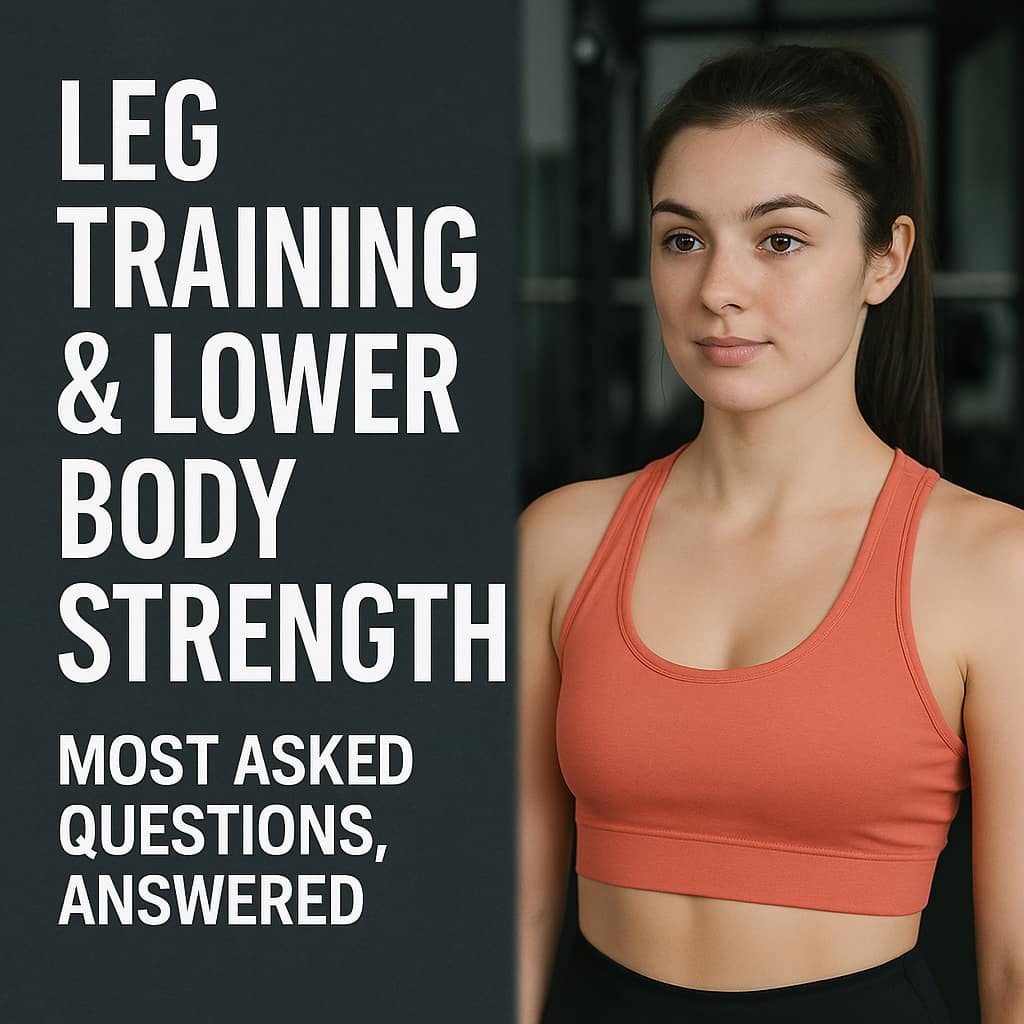

7. FAQs – Leg Training & Lower Body Strength (Most Asked Questions, Answered)
Leg workouts generate a lot of curiosity because they’re tough but essential. Here are some of the most frequently asked questions about leg exercises and lower body strength, answered clearly and backed by fitness science.
❓ How many times per week should I train legs?
Answer: Ideally 2–3 times per week. Beginners can start with twice, while advanced athletes can push for three sessions with varied intensity (heavy, light, plyometric).
❓ What is the single best leg exercise?
Answer: Most trainers agree that squats are the king of leg exercises. They target quads, glutes, hamstrings, and even your core. But the best routine combines squats with deadlifts, lunges, and calf work for balance.
❓ Can I build strong legs at home without equipment?
Answer: Yes! Bodyweight squats, lunges, wall sits, jump squats, and resistance band exercises are excellent at-home options. Adding a backpack filled with books or water bottles can provide extra resistance.
❓ Why are leg workouts so exhausting?
Answer: Legs contain the largest muscle groups in your body. Training them requires more oxygen, energy, and overall effort, which explains the fatigue (and why leg day burns the most calories).
❓ Should I do cardio on leg day?
Answer: Light cardio as a warm-up is great, but avoid intense cardio after heavy leg training. It can delay recovery. If you want to combine, try HIIT or cycling on a separate day.
❓ How long does it take to see results in leg strength?
Answer: With consistent training and proper nutrition, beginners usually notice improvements in 4–6 weeks. Visible muscle growth may take 8–12 weeks.
❓ Do squats make your legs bulky?
Answer: No – this is a common myth. Squats build lean muscle and shape your legs. Bulky legs require years of progressive overload and high-calorie surplus. For most people, squats result in toned, athletic legs.
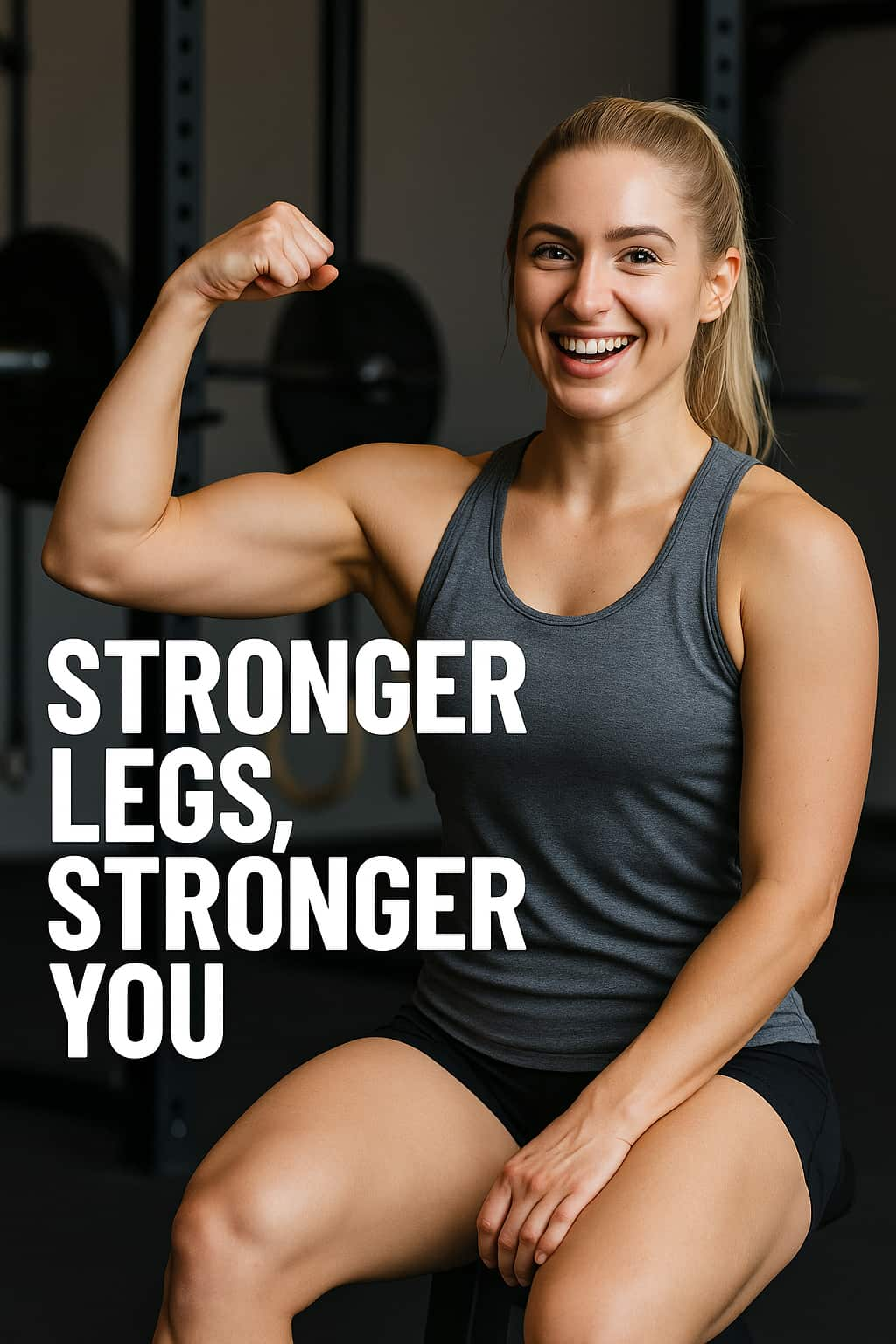

8. Conclusion – Stronger Legs, Stronger You
Your legs aren’t just muscles that carry you from point A to point B they are the foundation of strength, balance, and overall fitness. Training them properly improves not only your lower body but also your posture, athletic performance, and metabolic health.
From compound exercises like squats, deadlifts, and lunges that build raw power, to isolation movements like calf raises and hamstring curls that add shape and balance, leg training should be at the heart of any well-rounded fitness program. Combine these with structured routines, proper nutrition, and smart recovery, and you’ll notice improvements in both strength and aesthetics.
⭐ Key Takeaways
- ✅ Train legs 2–3 times per week with a mix of compound and isolation moves.
- ✅ Consistency matters more than intensity—progress comes step by step.
- ✅ Fuel your body with proper nutrition (protein, carbs, hydration).
- ✅ Recovery is non-negotiable—sleep and rest are just as important as training.
- ✅ Avoid common mistakes like ego-lifting, poor form, or skipping leg day.
CoreWellFit Perspective
At CoreWellFit, we believe in building fitness routines that create stronger, healthier, and more confident people from the ground up. Whether you’re training at home or in the gym, focusing on your lower body is an investment in long-term strength and mobility.
👉 Ready to take the next step in your fitness journey?
Explore more here:

